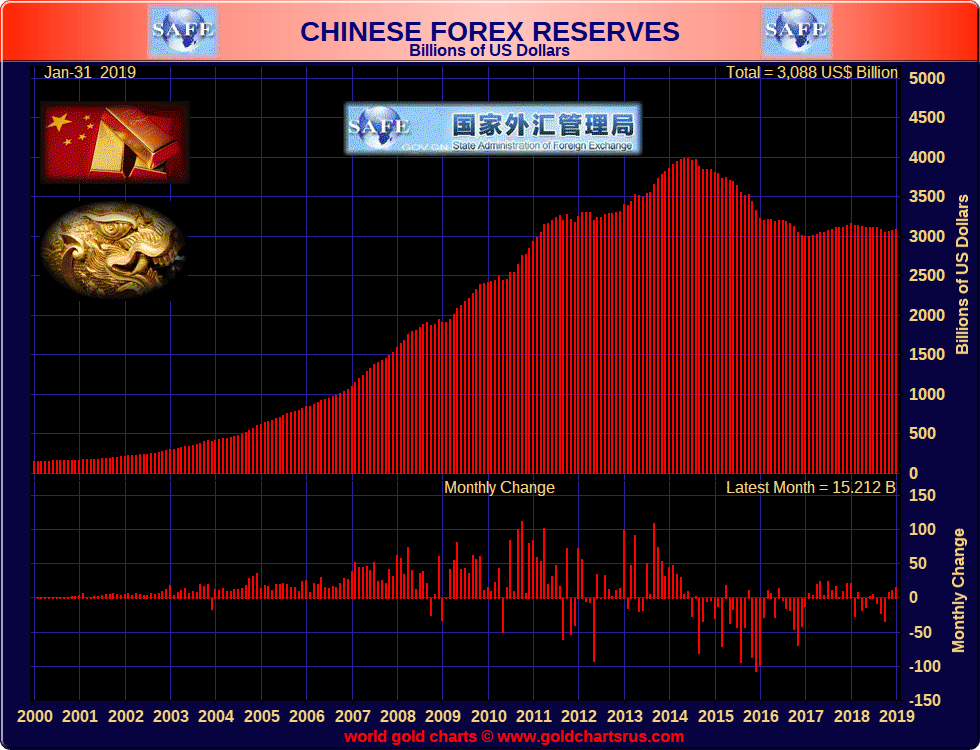By Zhou Xin, Karen Yeung
China has joined a global central bank gold rush in the last two months by increasing its official gold reserves, even though the purchase remains modest compared to the volume of the mainland’s foreign exchange reserves, according to data released by the People’s Bank of China on Monday.
The country’s gold reserves rose slightly to 59.94 million ounces (1 864 tons) at the end of January from 59.56 million ounces at the end of December 2018, marking a second straight month of increase.
The latest gold purchase by the world’s second-largest economy came at a time when global central banks are hoarding the precious metal. According to the World Gold Council, the amount of gold bought by central banks in 2018 reached the highest annual volume on record since 1971, the year that former US President Nixon Richard scrapped the dollar’s peg to bullion.
China, the world’s largest foreign exchange reserve holder, has been reluctant in diversifying its US$3 trillion foreign exchanges into gold. Official gold reserves have remained unchanged for 26 months at 59.24 million ounces from October 2016 to November 2018.
Yi Gang, the current central bank governor, said in 2013 when he headed the State Administration of Foreign Exchange (SAFE) that Beijing was unable to diversify significantly into gold because the gold market is too small for China’s US$3 trillion foreign reserves.
But things may start to change – though it remained to be seen whether the modest gold purchases in the last two months represented a fundamental shift in China’s attitude towards the precious metal, analysts said.
Jeffrey Halley, senior market analyst at currency broker OANDA, said geopolitical risks in the world, from US-China trade war to Venezuela, and risk aversion in stock markets had triggered a renewed interest to buy gold as a “safe haven hedge”.
“China has also long been trying to diversify its reserves away from the US dollar,” Halley said.
China’s gold reserves had stayed unchanged at 33.89 million ounces from April 2009 to May 2015 when its foreign reserves almost doubled. Its official holding of gold jumped to 53.32 million ounces in June 2015, and edged up to another plateau of 59.24 million ounces in October 2016.
In January, the mainland’s foreign exchange reserves rose by US$15.2 billion – the biggest increase in a year – despite the effect of the 2019 annual foreign exchange purchase quota for the country’s 1.3 billion people at the start of the year. Beijing grants every Chinese citizen an annual US$50,000 exchange quota, which is automatically activated in January.
Wang Chunying, a spokeswoman of SAFE, said in a statement that the appreciation of non-dollar assets last month helped boost a modest rise in the overall foreign exchange reserve size.


Original source: South China Morning Post
Reproduction, in whole or in part, is authorized as long as it includes all the text hyperlinks and a link back to the original source.
The information contained in this article is for information purposes only and does not constitute investment advice or a recommendation to buy or sell.

















